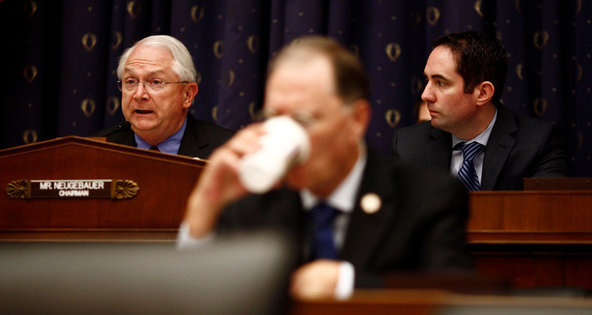Concerns about the strength of the economy and the potential for a budget fight in Washington pushed the stock market down on Monday.
The Dow Jones industrial average fell 49.71 points, or 0.32 percent, to 15,401.38, while the Standard Poor’s 500-stock index dropped 8.07 points, or 0.47 percent, to 1,701.84. The Nasdaq composite index declined 9.44 points, or 0.25 percent, to 3,765.29.
The Dow jumped 147 points on Wednesday to close at a record after the Federal Reserve decided to keep its huge economic stimulus program intact. But that rally has been wiped out by anxiety over a budget and debt fight in Washington.
Investors initially cheered the Fed’s surprise decision to keep its stimulus in place because the program has helped sustain a bull run in stocks dating to March 2009.
Doubts have crept into investors’ minds, however, because the central bank thinks the economy is not strong enough for it to pull back the stimulus.
William C. Dudley, the president of the Federal Reserve Bank of New York, said on Monday that while the economy was improving, “the headwinds” created by the financial crisis were only easing slowly.
Kate Warne, an investment strategist at Edward Jones, said that while the stimulus looked positive at first blush, “at second blush, it says conditions weren’t as strong as we were previously thinking.” She added: “Markets are now responding to that.”
The Fed is buying $85 billion in bonds each month to hold down long-term interest rates and encourage borrowing and spending.
Financial stocks fell the most among the 10 industrial groups in the S. P. 500 index. Investors sold on concerns that earnings would be hurt by lower trading volumes of bonds and foreign currencies at investment banks.
Utilities were the best performing industry group in the S. P. 500 as investors sought less risky places to put their money.
Nike and Visa, along with Goldman Sachs, also began trading on the 30-member Dow Jones industrial average on Monday, replacing Alcoa, Bank of America and Hewlett-Packard.
The threat of a looming political showdown over the budget also weighed on investors.
The House of Representatives voted to defund President Obama’s health care law on Friday, a gesture that reminded Wall Street that the Republican-led House and the Democratic-controlled Senate are poised for a showdown over spending.
The debt ceiling must be raised by Oct. 1 to avoid a government shutdown, and a potential default on payments, including debt, later in the month.
“There seems to be a higher probability there will be more of a battle over that,” said Scott Wren, a senior equity strategist at Wells Fargo Advisors. “That could inject some volatility into the market.”
Also on Monday, the financial data firm Markit said its so-called flash, or preliminary, manufacturing purchasing managers index for the United States retreated to 52.8 this month from 53.1 in August, confounding analysts’ forecasts for an improvement. A reading above 50 indicates expansion.
Output growth accelerated but new orders slowed, suggesting “production growth is likely to weaken in the fourth quarter unless demand picks up again in October,” said Chris Williamson, Markit’s chief economist.
In government bond trading, the price of the benchmark 10-year Treasury note rose 10/32, to 98 9/32, and its yield fell to 2.70 percent, from 2.74 percent late Friday.

Article source: http://www.nytimes.com/2013/09/24/business/daily-stock-market-activity.html?partner=rss&emc=rss








